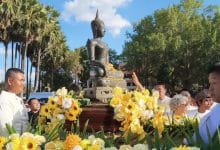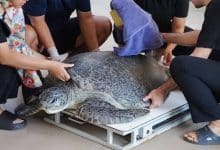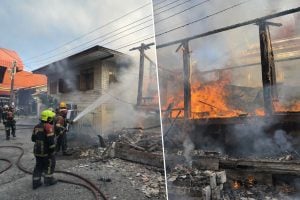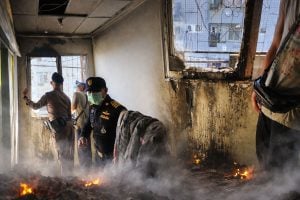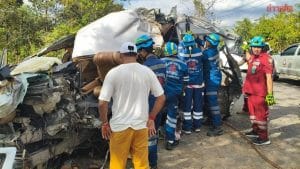Lack of tourists sees return of endangered sea turtles to Koh Samui
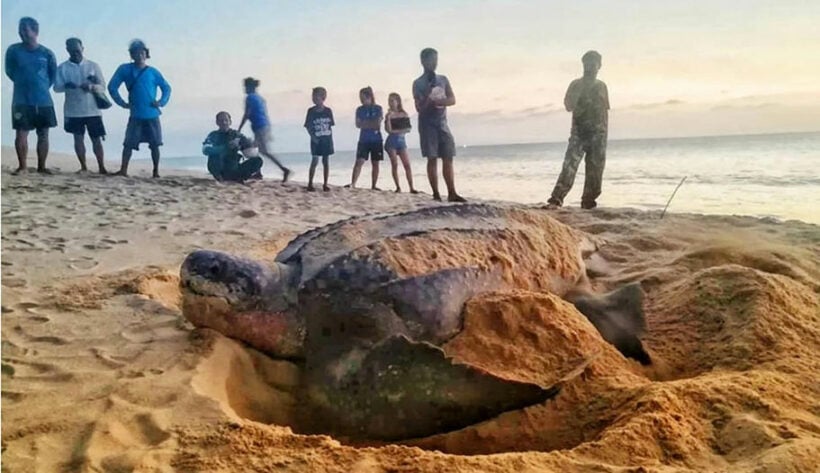
Thailand’s ebach resorts maybe bereft of tourists, but another population is making a comeback: endangered hawksbill and green sea turtles are returning in droves. This year, as the Covid-19 pandemic emptied the nation of tourists, nests on Koh Samui in the southern Surat Thani province have burgeoned. Since February, some 838 baby turtles have scuttled their way across the island’s beaches and into the sea, with 2 nests still to hatch. According to Dr Thon Thamrongnawasawat, deputy dean at the faculty of fisheries at Kasetsart University in Bangkok:
“It is really exciting and we hope that people in Samui will help us protect the turtles in the future – we have a chance.”
Locals and businesses alike have rallied to protect the nests, building bamboo fences around them to shield them from roaming water lizards and dogs. Some have camped beside nests in hopes of seeing the babies hatch, or spotting a mother turtle, who usually returns after 10 or 12 days to lay more eggs. 1 hotel ordered its security teams to keep a watchful eye, visit every hour, and redirect CCTV and motion sensors to make sure the eggs were not disturbed.
Female sea turtles typically nest every 2-3 years, using their flippers to dig a teardrop shaped cavity in the sand, and laying 80-120 leathery eggs, usually at night. A marine biologist working at the Banyan Tree resort, where a single green turtle laid 5 nests this year, said:
“They look for areas that are calm and peaceful. We try to grow banyan plants, because normally they love the trees because of the shade.”
It’s not clear whether turtles that may have been put off from nesting on crowded Samui beaches in the past might have travelled elsewhere to nest. It’s possible that they released the eggs in the water, and they failed to hatch, says Thon.
“The eggs inside the sea turtle cannot wait. It’s like humans: if you need to give birth, you will give birth in the taxi.”
The number of sea turtles in Thailand’s waters has fallen drastically over the past century. Samui was a completely different place 50 years ago; it was only wooden forests, coconut farms and there was no road. Now, in a good year, the island has more than 2 million visitors. It’s not just the development of beaches that poses a threat to turtles: other dangers include poaching, pollution and fishing nets.
Around the world, the future of the turtles and other marine life is increasingly threatened by climate change, as hotter temperatures contribute to rising sea levels and storms, changing ocean currents and harming the coral reefs which many depend on for survival. There is also growing concern about the impact of global warming on the gender ratio of turtles: the warmer the sand eggs are buried in, the more likely the offspring will be female.
In Thailand, conservationists are finding new ways to monitor the turtles. In recent months, the Phuket Marine Biological Centre tracked a hawksbill mother turtle that laid eggs on Samui in an attempt to discover more about how her route can be better protected. The centre’s director says:
“If you want to conserve any animal you have to know their life cycle and habitat.”
Facial recognition technology that identifies turtles is being developed. It’s hoped this will help generate more accurate estimates of numbers, as turtles are difficult to count due to their migration patterns.
The number of nests reported on Samui this year is by far the highest of any year on record, though reports only date back to 2012. No one knows what will happen when the island sees the return of tourists, which so many businesses depend upon.
Thon hopes a balance can be struck. The pandemic has shown that Samui is an important nesting ground for the species, and the break in tourism caused by the pandemic is a chance to act, he says.
“We have to.”
SOURCE: The Guardian
Latest Thailand News
Follow The Thaiger on Google News:
